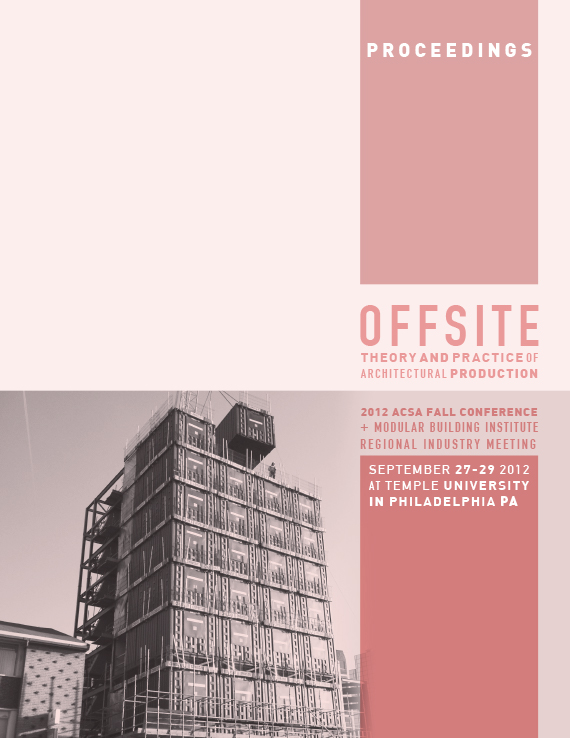Author(s): Marc A. Roehrle
The architectural academic community had been divided regarding thecomputer and its role in educating students. This divisive discourse hadwasted a great deal of time and energy. While waging this intellectual trenchwarfare, these two dichotic camps dug-in, and became steadfast in theiropinions. The issues at hand, however, were actually quite simple. Ratherthan supplanting traditional means of learning and designing (“manual representation”)this new technology should have been seen as an opportunityto add to the pedagogical agendas of architecture schools. The evolution ofcomputer fabrication from computer drafting has generated another similardiscourse. As designers began to explore the possibilities and opportunitiesthat this burgeoning technology offers, they repeat the exact same mistakespreviously made. Rather than understanding how the building culture couldbenefit from the addition of this exciting new means, they see it as a revolutionin the building industry: indiscriminately superseding and replacingolder methods. The advancement of computers, robotics and other meansof fabrication has ushered in new possibilities that architects have beeneager to appropriate. Employing the analogy of the automotive industry, weshould not look to companies like Toyota who produces millions of identicalvehicles each year; we should look to Bentley Motors Limited.Bentley employs a combination of old world craftsmanship with cuttingedge technology to create one of the world’s finest cars. To fabricate therich interiors of each Bentley, 200+ hours of exacting labor goes into theleatherwork and woodwork alone. Bentley employs a series of steps thatintertwine and operate seamlessly between a series of digital processes andhandcrafted manual techniques. For example, the Coach-worthy leather isfirst selected and carefully assessed by an inspector who marks any blemishes.These hides are stretched across a digital scanning bed that scansfor these marks. The computer then tabulates how to best cut out all thepatterns insuring that the blemishes do not mar the final product, whichare then sewn by an individual; using a combination of an industrial sewingmachine and hand stitching.Venturi Scott Brown repudiated modernists singular readings and interpretation;“less is a bore” they suggested. Instead they advocated that weaspire towards multiple readings, complexity and contradiction. Their notionof “and, and, and” would greatly benefit the implementation of new technologies.The effective use of strategically implementing means and methodswould greatly reduce costs due to errors, redundancy or inefficiency and developa process where the translation of idea into built artifact is more fluid.
Volume Editors
John Quale, Rashida Ng & Ryan E. Smith
ISBN
978-0-935502-85-5

 Study Architecture
Study Architecture  ProPEL
ProPEL 
